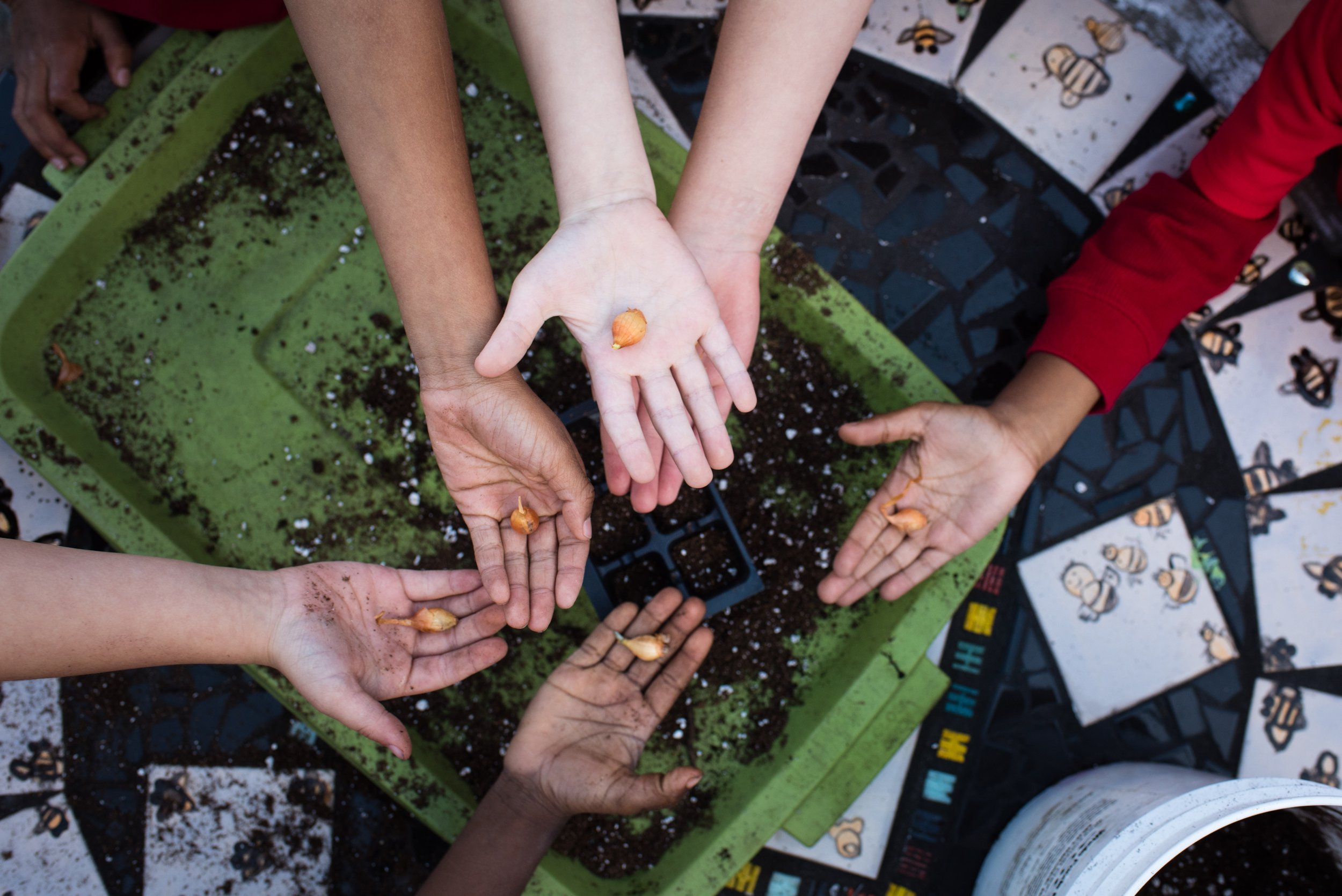
Caring for Communities:
Food Insecurity: More Than Just Hunger
Food insecurity doesn’t just mean skipping meals, it also means inconsistent access to nutritious, affordable food. For children, this often translates into diets low in fresh produce and high in processed, shelf-stable options. Grady’s Classroom addresses this head-on by introducing students to accessible, garden-grown foods they can touch, taste, and learn to prepare.
By embedding food education in schools - especially Title I and afterschool programs - we help students and families build a stronger relationship with nutritious foods. Our hands-on approach demystifies vegetables and empowers children to become confident, curious eaters, while also opening conversations at home around food access and nutrition.
For many children, especially those in food-insecure environments, vegetables are unfamiliar and even intimidating. Some students in our program have never seen a tomato plant or tasted a fresh green bean. This lack of exposure contributes to lifelong dietary habits that can be difficult to change.
Grady’s Classroom uses storytelling, tasting sessions, and gardening to bridge that gap. We create joyful “firsts” with vegetables - first time touching soil, first time harvesting lettuce, first time trying spinach in a smoothie. These sensory-rich moments plant the seeds for healthier choices and help kids build positive, lasting relationships with food.
Vegetable Unawareness
Community Garden Benefits: Cultivating More Than Crops
Community gardens are more than growing spaces, they’re connection hubs. They bring together families, neighbors, and educators to work toward a shared goal: growing fresh food while strengthening local ties. Studies show that community gardening can improve mental health, increase physical activity, and enhance food security in underserved areas.
Through Grady’s Classroom, we extend this model into schools and youth programs. By giving kids a sense of ownership in their gardens, we help nurture a culture of collaboration and resilience, rooted in the soil.
School Gardens: A Living, Learning Lab
School gardens offer a powerful extension of the classroom. From math and science to language arts and social-emotional learning, gardening provides real-world applications that engage multiple senses and learning styles. It’s hands-on education with edible rewards.
Grady’s Classroom leverages school gardens not only to teach kids where food comes from, but also to promote teamwork, patience, and responsibility. When children plant, tend, and taste their own vegetables, they don’t just learn, they thrive. Our seasonal curriculum is designed to align with the rhythms of the school year, reinforcing academic and life skills from the ground up.
In a world where kids are increasingly overstimulated and anxious, mindfulness practices can provide crucial moments of calm. Gardening and cooking naturally promote presence, focus, and care, whether a child is weeding a garden bed or stirring a simmering sauce.
Grady’s Classroom incorporates mindfulness into each module, encouraging kids to slow down, observe, and reflect. These small acts, like feeling soil in their hands or quietly tasting a new veggie, help reduce anxiety and increase emotional regulation. Over time, these habits become tools students can use beyond the classroom.
Mindfulness & Mental Health
Bullying thrives in environments where kids feel unseen or disconnected. Garden-based education flips the script by creating shared responsibility, collaboration, and pride in something bigger than themselves. Students of all abilities and backgrounds can contribute meaningfully in a garden or kitchen.
Grady’s Classroom emphasizes empathy, teamwork, and storytelling as essential program pillars. As kids work together to grow and prepare food, they begin to see each other, and themselves, differently. These shared experiences foster inclusion, mutual respect, and a stronger sense of classroom community.
Bullying Prevention: Cultivating Respect & Belonging
